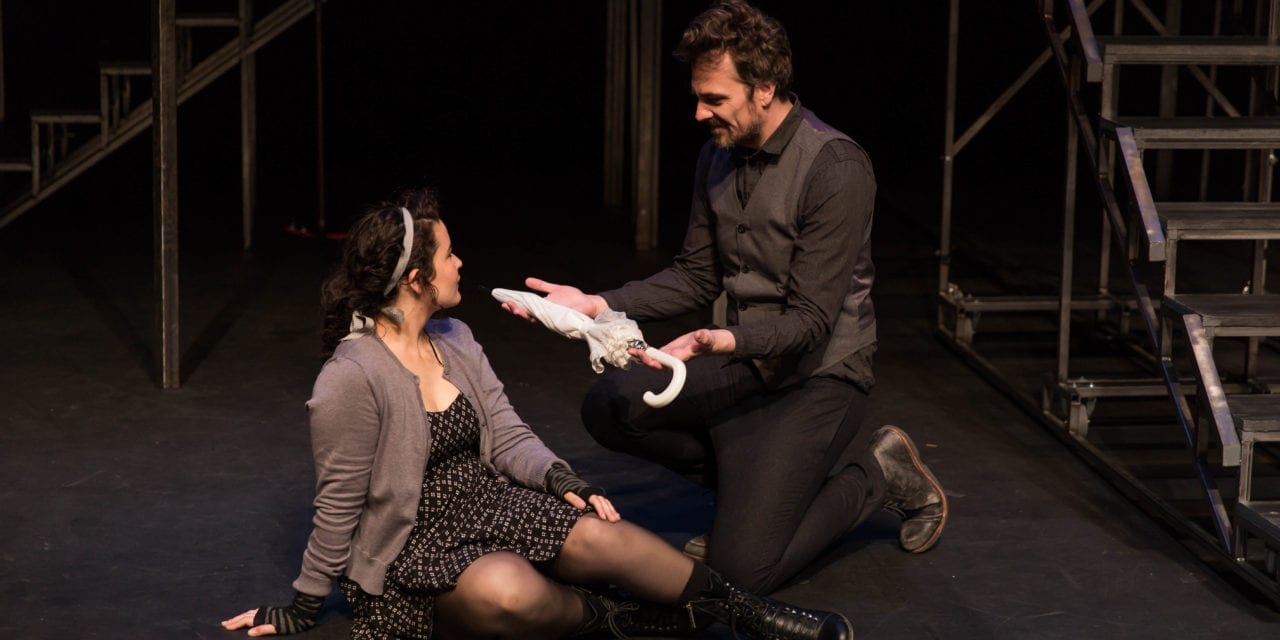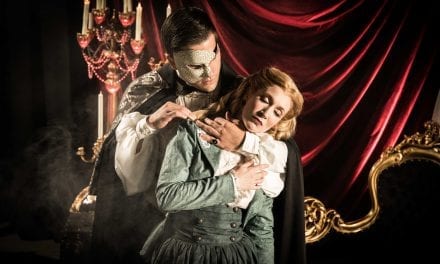
Show closes July 16, 2017.
SALT LAKE CITY — Recently I was at a theatre conference that talked about how the new art that comes out of your local theatre companies is part of what continues to shape the story of the place where you live. It was this lesson that helped me feel a great deal of excitement to experience a show debut from a local author with a newer theatrical company in the Salt Lake Valley.
How Long Can You Stand on the Train Tracks: A Game for Two Sisters is a new play, written by Morag Shepherd and directed by Alexandra Harbold. It was brought to the stage by a partnership between Flying Bobcat Theatrical Laboratory and Sackerson. The theatrical note in the program states that this show “fits in the place between wake and sleep and how we interpret and make meaning in life.” It was an immersive adventure and an examination of a troubled family relationship.
The four characters in the show were sisters Charlie (Merry Magee) and Pepper (Nicki Nixon); their father (Robert Scott Smith), and Grayson, the love interest (Shawn Francis Saunders. The plot felt much like a dream, with unexpected stops and starts, confusion in the timeline, and reimagining of events, all by design. To explain the plot in too much detail would give away some of the tricks of the show, but it is about grief, loss, how we process mistakes in life, and the relationships that change along the way. For me, it seemed to be about a traumatic event and how that can trigger dreams,

Merry Magee as Charlie and Robert Scott Smith as Charlie’s father in the Flying Bobcat Theatrical Laboratory and Sackerson’s production of How Long can you Stand on the Train Tracks. (Copyright Sackerson 2017.)
thoughts, memories, confusion, and misunderstanding. The actors themselves played well against one another, with some very pointed and strong moments between Magee and Smith that touched on the father-daughter relationship and how complicated that can be. Nixon had some strong moments as Pepper, but could be a bit over the top at times, which seemed to distract slightly from the full performance. Saunders played the role of Grayson well, and had some of the strongest moments of food for thought; however he felt a bit out of place in some moments within the story. When looking at that through the lens of a dream, I can see how that may be interpreted well, so it is hard to tell if it was an actor choice or a directorial or author-inspired motive.
The set and lighting, by Martin C Alcocer, were simple upon first impression, but throughout the evening proved to be the most integral part of the performance. When a show has a minimal set, the lighting seems to be more pronounced, and Alcocer built a design that helped the mood changes and plot comprehension throughout the production.
Much of the show included moments where the audience was encouraged to clap or stomp to be part of the sound effect of the train, which was an interesting choice. I was surprised at the emotion it elicited out of me, and felt that it was a strong connecting factor of the story. There was also some moments where the characters would turn and speak as if to blame the audience for certain happenings, and that also left me with an uneasiness that was effective, considering the attempts of the play.
Perhaps the most intriguing part of the show was what happened after I saw it; the play left me to ponder and wonder about the story and what it meant. Just as we study great novels, we can understand different lessons based upon the lenses we wear when we view them. Because of elements in my own life, How Long Can You Stand on the Train Tracks felt very much like an examination of how the mind processes or refuses to process experiences of trauma, and how we can hold on to shame in such a way as to harm ourselves rather than heal. I felt that Shepherd was able to tell a story that touched me on that level. However, the theatrical note in the program emphasized that there may not be a right or wrong answer, and that I may find something different than others who are watching this same experience. Shepherd was able to accurately reflect the life paradox of two people who can live the exact same experience and yet feel very different outcomes.
How Long Can You Stand on the Train Tracks was an entirely new experience in theatre for me. It was not a story with a definite beginning, middle, or end, but rather a story of the mind and dreams and interpretations. I am not sure that it is something that all audiences would enjoy, but it was certainly a strong and exciting artistic expression of relationships, dreaming and consciousness, and understanding.
Full disclosure: One of the producers of this production (Dave Mortensen) is the founder of Utah Theatre Bloggers Association. Mr. Mortensen did not have any involvement with the writing or editing of this piece. Honest criticism was encouraged.





